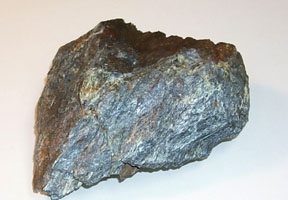The state of California hosts a rich variety of minerals and rocks. Many are considered resources, while others represent hazards to human health or the environment.
Overview
The California Geological Survey provides objective geologic expertise and information about California’s diverse non-fuel mineral resources, producing maps, reports, and other data products to assist government agencies, mining companies, consultants, and the public in recognizing, developing, and protecting important mineral resources. Non-fuel mineral resources fall into three categories: metals, industrial minerals, and construction aggregate.
- Metals include gold, silver, iron and copper.
- Industrial minerals include boron compounds, rare-earth elements, clays, limestone, gypsum, salt and dimension stone.
- Construction aggregate includes sand and gravel, and crushed stone.
The primary mineral hazards of concern in California are radon, mercury, and naturally-occurring asbestos.
Learn More

Official Geological Symbols of California
California State Mineral (Gold)

State legislation signed on April 23, 1965 designated native gold as California's official state mineral. At the signing ceremony Governor Edmund G. Brown Sr. said, "Selection of gold as our state mineral is acknowledgement of the intimate part it [gold] has played in the history of our people and of the fact that mining is a major California economic activity."
In recognition of the California Gold Discovery to Statehood Sesquicentennial (1998-2000) CGS produced the "Map of California Historic Gold Mines" as a poster at the scale of 1:1,500,000. The map shows the location of 13,500 historic California gold mines.
California State Gem (Benitoite)

On October 1, 1985 benitoite was designated as the official state gem. Named in 1907 after the river, county, and nearby mountain range where it was found. "Benito" is a Spanish form of benedictus, meaning blessed. Crystals can occur in a rich blue color as striking and flawless as the finest sapphires.
California State Rock (Serpentinite)

Serpentinite, or serpentine rock, is the metamorphosed remains of magnesium-rich igneous rocks, most commonly peridotite, from the earth's mantle. Serpentinite is apple-green to black and is often mottled with light and dark colored areas. Its surfaces often have a shiny or wax-like appearance and a slightly soapy feel. Serpentinite is usually fine-grained and compact but may be granular, platy, or fibrous in appearance. Serpentinite may contain naturally-occurring asbestos, a mineral hazard.
Web page by:
California Geological Survey - Mineral Resources Program
